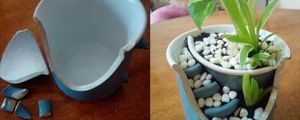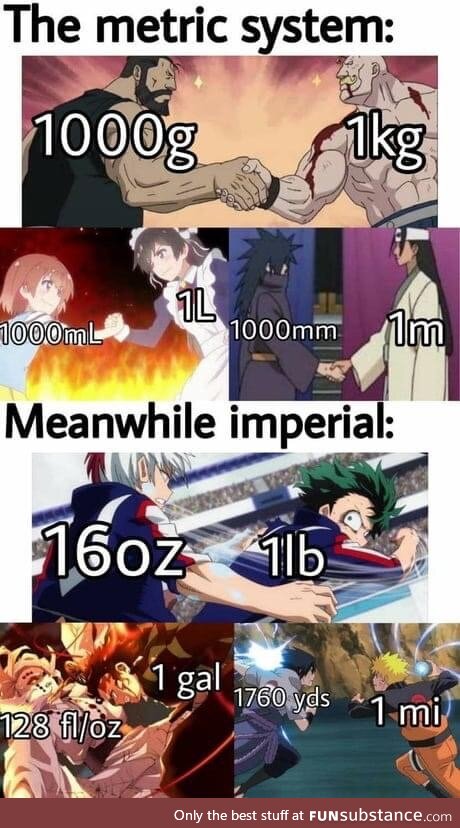Featured Posts

I wish I had a fort

The powerof positive thinking

NASA

Pray for Australia

Take care of each other

She has emerged

My soul feels so much better

I just ordered one. #Just2019HispanicThings

He really wanted his photo at the Halloween party, but was super scared of the spiders

The Only Thing More Contagious Than COVID19 Might Be This Fox's Smile
About
FAQ
Contact
Rules
Terms
Privacy
Feedback
Keyboard Shortcuts:
Previous Post · Next Post · + CTRL Skip Post
Previous Post · Next Post · + CTRL Skip Post
© 2025 FunSubstance · funny and entertaining pictures, memes, gifs & videos.



Mean- as this illustrates. An ML is not comparable to an ounce. It’s exponentially smaller. The deciliter is about 3oz’s- but it’s…
1. The numbers get big, even when they are small. If we aren’t multiplying by a large number where the variance would matter, we still need 2 digits minimum to express a distance that can use 1 in standard. If you use 5 feet 5 inches of person, to get the same accuracy you need 3 or 4 digits. You’re now working with a 4 digit number for all operations.
We don’t need to divide by 10’s or 100’s or 1000’s to do everyday things- you can divide or multiply by 2,4,8,12,16 as needed. Most of the time it wouldn’t be common in daily life to go beyond 16, but if you needed to it’s easy enough to figure out because fractions are very human friendly. Your eyes are very good at telling when there are 4 equal pieces and how many are there or missing or how…
That said, it all depends. A 22 year old may have 18-20 years of experience with one system or the other only. If they were moved to an environment where they were immersed in the other system- they may find that after 40 years they still find the original system easier, but they may also find that in 5 years they acclimate to the new system and find it easier. There is also the sort of nuance of what “easier” means- we could say an alcoholic struggling in life would have an “easier” life sober, but making that change and living with it may be “harder” from their perspective. If we get away from the subjective, certain systems are better suited to the innate cognitive abilities of the average human brain.
Next, well discuss why TIME has no metric or SAE conversion and how the US Navy controls you daily lives.
I digress. In grad school I took an afternoon to attempt to "metric-fy" time to make this adjustment. 100 seconds to a minute, 100 minutes to an hour, maybe 20 hours to a day, 5 days a week. Stupid Earth and solar system isn't perfect.. and that bothers my OCD.